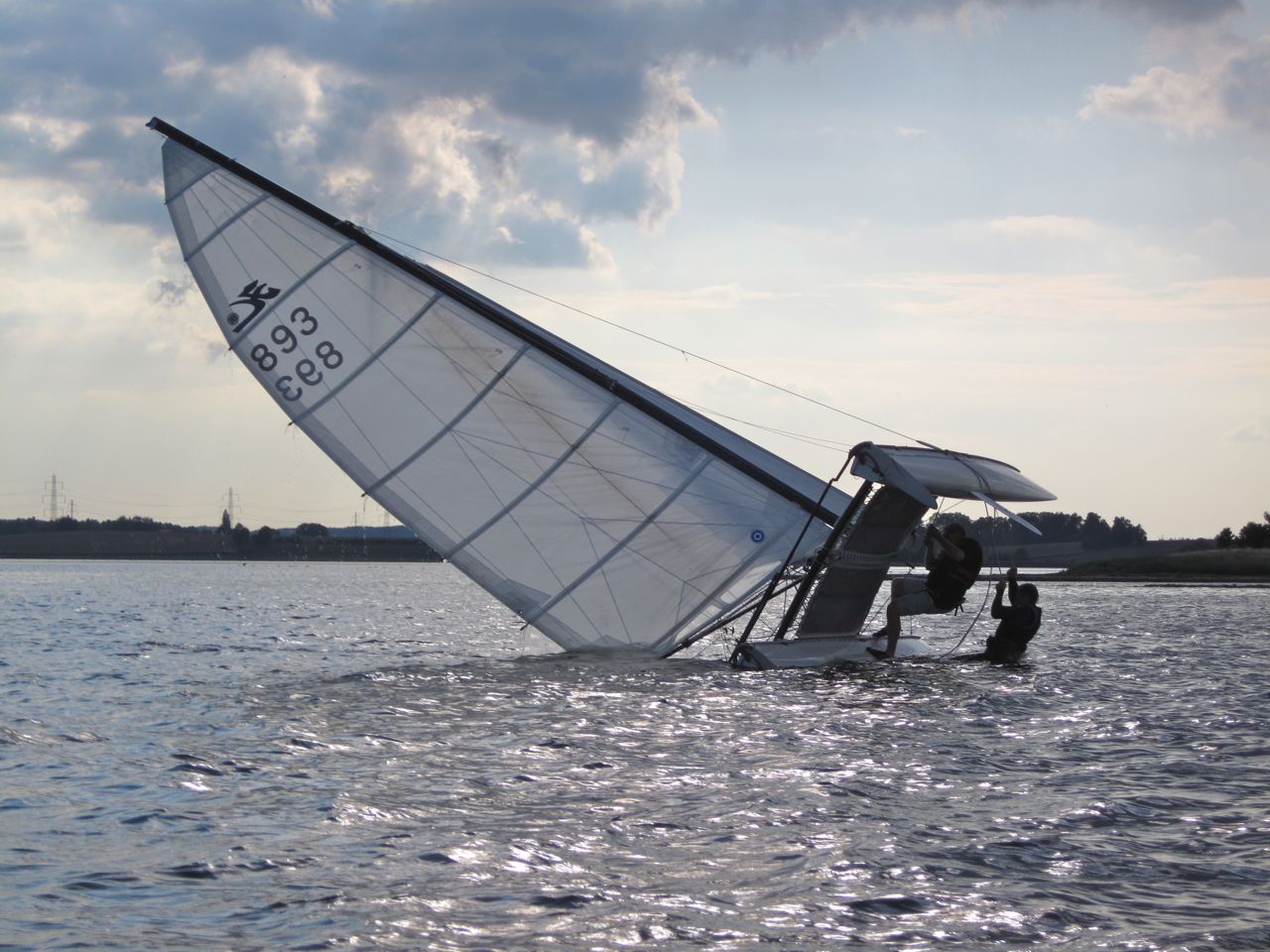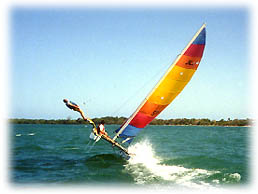Hobie Cat
The company founder, Hobie Alter,
began as a surfboard manufacturer in the late 1950s. According to one
source, after sailing on the world's first ocean-going catamaran, the Manu Kai, Alter patented the idea.[1]
According to another source, Alter's focus changed in 1961 to designing
an easily beached fibreglass catamaran. The impetus of this shift is
attributed to a 1961 boat show in Anaheim, CA which placed Alter in a
booth selling surfboards, next to Art Javes, the designer of the new (1961) AQUA CAT 12
sailboat. That sailboat featured lightweight fibreglass hulls with an
aluminium tube structure supporting a trampoline style deck for seating.
The AQUA CAT catamaran did well in shallow water, but relied on dagger
boards to reduce slippage sidewise under sail. Dagger boards were also
used by the much heavier Pacific Cat
from 1960. That design featured a solid fibreglass deck on a 19' x 8'
boat, giving it a weight of almost 500 pounds. Following the 1961 boat
show, Alter contacted Arthur "Art" Javes, designer of the AQUA CAT to
tell him he was also entering the fledgling catamaran market. The first
Hobie Cat is credited with being first built in 1965 and featured a
structure similar to the AQUA CAT, but slightly heavier with rockered
hulls that did not rely on dagger boards. This design was more readily
beached than the AQUA CAT or Pacific Cat.








No comments:
Post a Comment